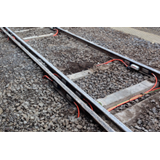However, a relatively flat rate of graduating engineers has increased competition for engineering skills, and the rail industry has struggled to attract sufficient numbers of engineers and skilled trades and technicians to fulfil its current and future infrastructure needs, according to research from Southern Cross University.
A report prepared by the University – in conjunction with the Cooperative Research Centre for Rail Innovation, Queensland University of Technology and industry partners– identified that engineers, who are in short supply globally, have not been attracted to careers in rail to the extent that the demand for rail engineers has outstripped employment by about 40 per cent. The report was recently published in the Asia Pacific Journal of Human Resources.
Engineers Australia estimated that by the 2011 census, 70,000 engineering retirements would have occurred, while graduates from Australian universities would number only about 45,000 for the same period.
It is also estimated that there will be vast numbers of retirements of rail engineers in the next five to 10 years as the average age of an engineer in the rail workforce is 48.
Project leader Associate Professor Michelle Wallace said the report highlighted the difficulties and opportunities facing the rail industry.
"There were some interesting findings from the interviews and surveys we conducted," she said.
"We found that the rail industry did not have a strong brand. Many of those interviewed were not aware of any new infrastructure that had been built since the steam era – the industry was not seen as modern and contemporary which is obviously not correct.
"However, when provided with rail brochures, students responded positively asking ‘What is it about?’, ‘What do you do?’ and ‘Who can I call?’. This suggests a level of curiosity among students towards rail careers. This situation provides the rail industry opportunities to educate students, teachers and careers advisors about current investment in rail and the potential of a rail career."
While for some in the industry, rail was typified as male dominated and old fashioned, focus groups of younger graduates and tradespeople revealed a different picture. As employees, their perceptions of rail were positive, with rail being described as offering good career prospects, security, flexibility and regular hours.
The report is being used as a basis to assist the rail industry identify best practice attraction and image strategies that are in use around the world to rebrand career pathways in rail to make them more appealing to early career graduates.
Associate Professor Wallace co-authored the report with SCU research associate Neroli Sheldon, Dr Roslyn Cameron and Professor Ian Lings.







-160x160-state_article-rel-cat.png)


-160x160-state_article-rel-cat.png)




